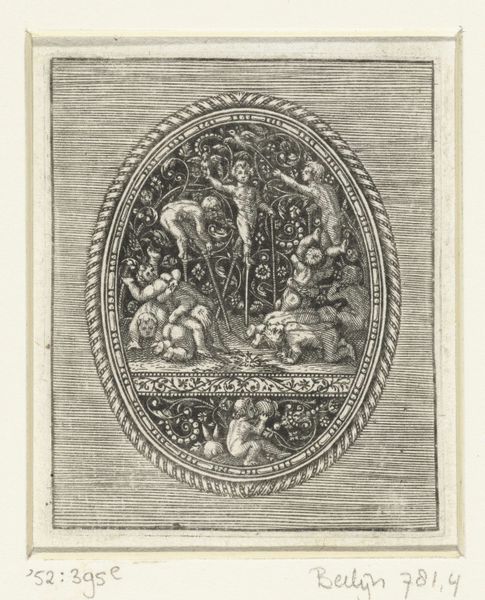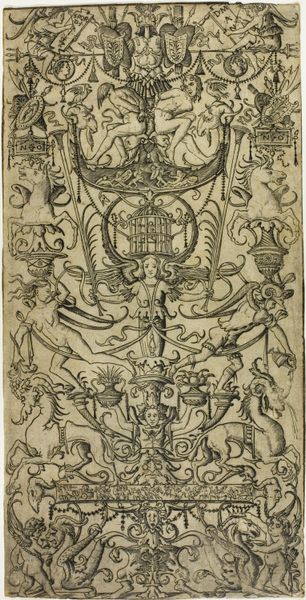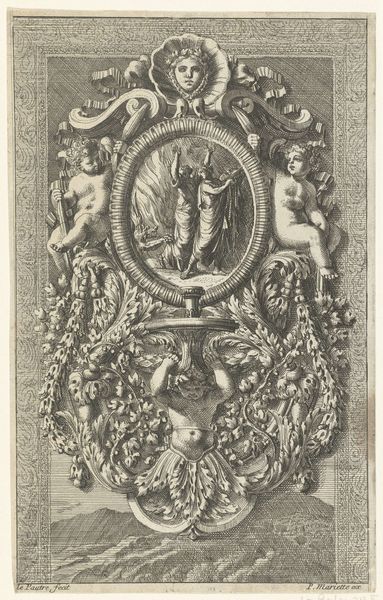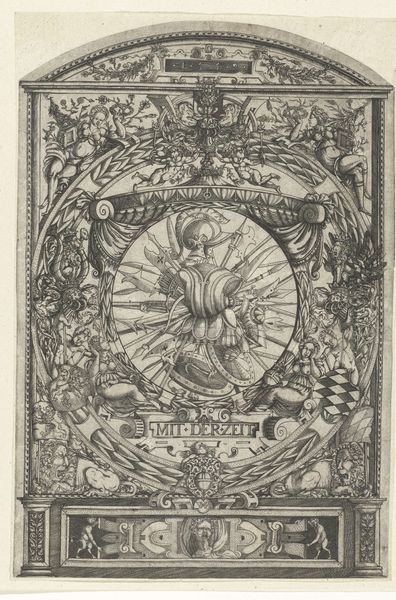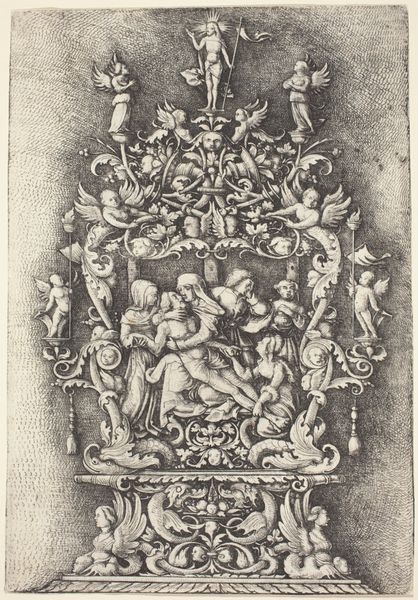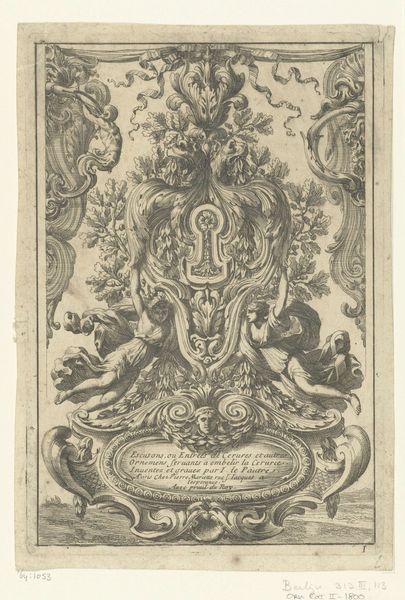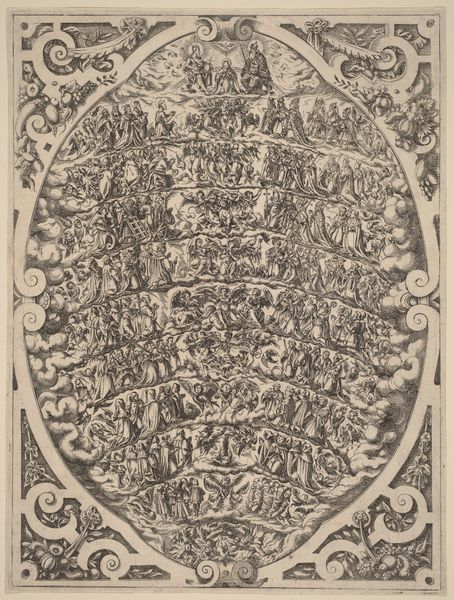
print, engraving
#
ink drawing
#
allegory
#
baroque
#
pen drawing
# print
#
figuration
#
line
#
history-painting
#
engraving
Dimensions: height 367 mm, width 243 mm
Copyright: Rijks Museum: Open Domain
Curator: This engraving by Jacob Matham, titled "Crucifixion in an Allegorical Framework," dates back to 1597 and currently resides at the Rijksmuseum. Editor: The composition strikes me first – this oval vignette crammed with figures and symbols feels intensely theatrical and somewhat overwhelming. The lines are so sharp and defined! Curator: Indeed, the linework is characteristic of Matham’s skill with engraving. The oval format is intentional; it's more than just a scene. Matham uses allegory—note the figures of Justice and Prudence flanking the crest at the top—to frame the crucifixion. This connects a biblical event to contemporary moral concerns. Editor: So, we are not simply looking at the religious scene itself? Instead, it’s a meditation on principles that this event should be remembered by? I am observing elements like the coats of arms and the inscription. Are those commissioned elements adding meaning to a message for a specific public? Curator: Precisely. The imagery speaks to ideas around justice, faith, and truth prevailing over hardship. The swan at the bottom could symbolize purity and grace amidst earthly struggles. Editor: But is the swan, in this crowded scene, in need of rescue more than signifying some ideal state? Perhaps a nod to conflict during the late 16th-century, in an Eighty Years War context? It feels less about triumph and more about constant negotiation with power. Curator: It could be a poignant reading. However, in visual terms, observe how each figure's pose and placement creates an aesthetic harmony despite their distinct allegorical functions, contributing to an integrated thematic impact through their forms and their historical reference. Editor: I am compelled by your analysis, and your focus on line, form and harmony provides insight. I would counter with, can we ignore the potential intended contemporary application to Dutch identity at this historical flashpoint? Curator: Well, in retrospect, looking at this small engraving with a new sense of both its formal qualities and the possible implications of its patronage opens the way for new interpretations. Editor: Precisely, by considering its cultural moment as well as the structure and composition, we arrive at a better and hopefully more open appreciation of the work.
Comments
No comments
Be the first to comment and join the conversation on the ultimate creative platform.

